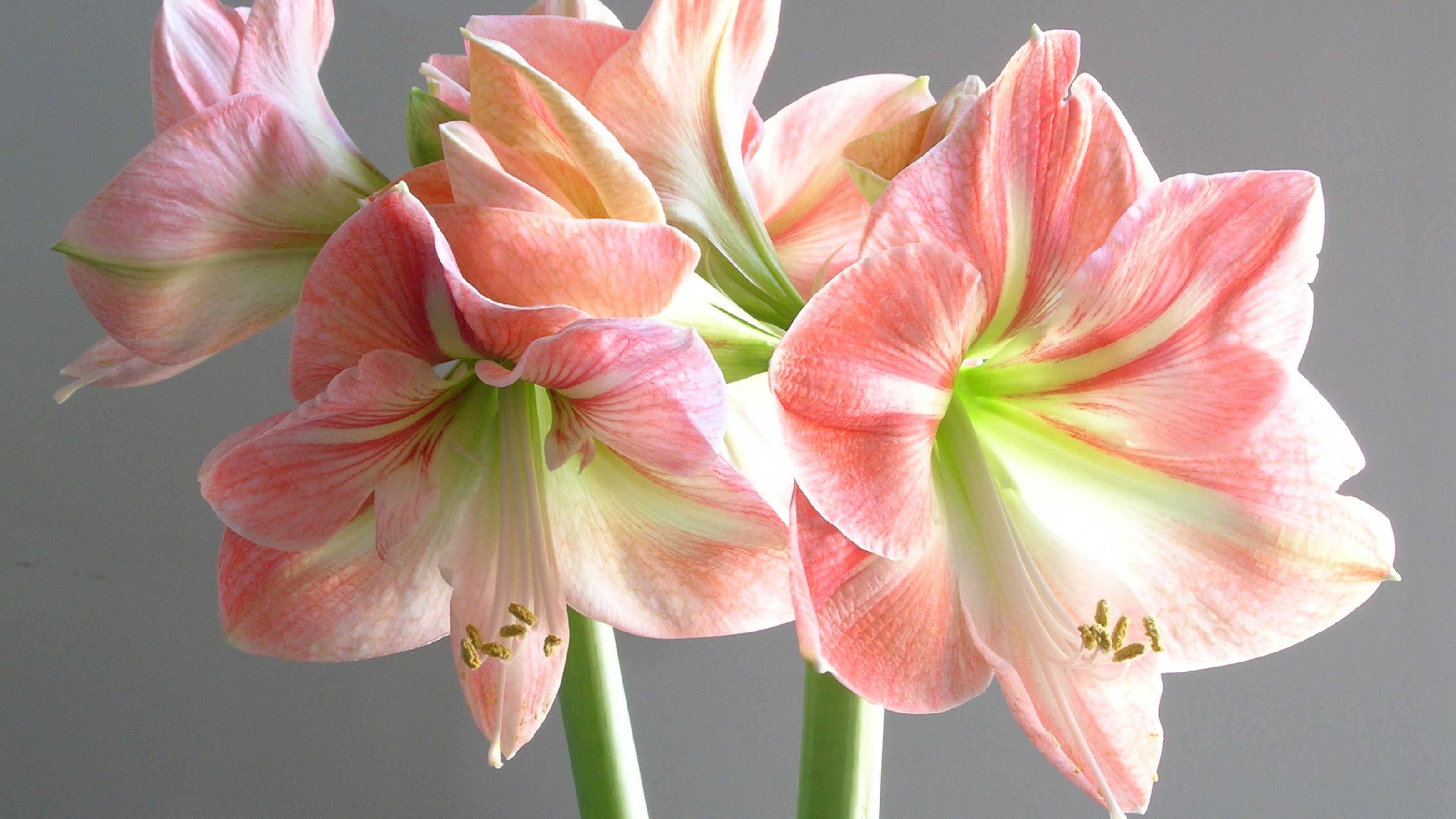
If you love a festive flowering plant, learning how to care for amaryllis is a must. Known for their impressive, trumpet-shaped blooms in red, white, and pink, they brighten up any interior scheme throughout the cooler months of the year.
Caring for them correctly is important for a dazzling display. This includes getting the watering, soil type, and lighting right, as our houseplant experts explain. Proper maintenance also encourages new blooms the following year.
If you want to give a stunning, seasonal boost to your collection of best indoor plants, you'll find all the essentials on amaryllis care below.
How to care for amaryllis, according to the experts
Amaryllis are some of the best houseplants for small spaces if you're looking for festive indoor blooms.
However, if you want to continue looking after yours once the flowers have finished, bear in mind the foliage isn't much to look at — unlike a Chinese money plant, available to order from The Lively Root, or exotic looking air plants such as the Ionantha Guatemala, also from The Lively Root, that make for pretty displays.
Moving amaryllis outdoors, if possible, is a great way to free up space until they start flowering again the following winter.
1. Pick healthy bulbs
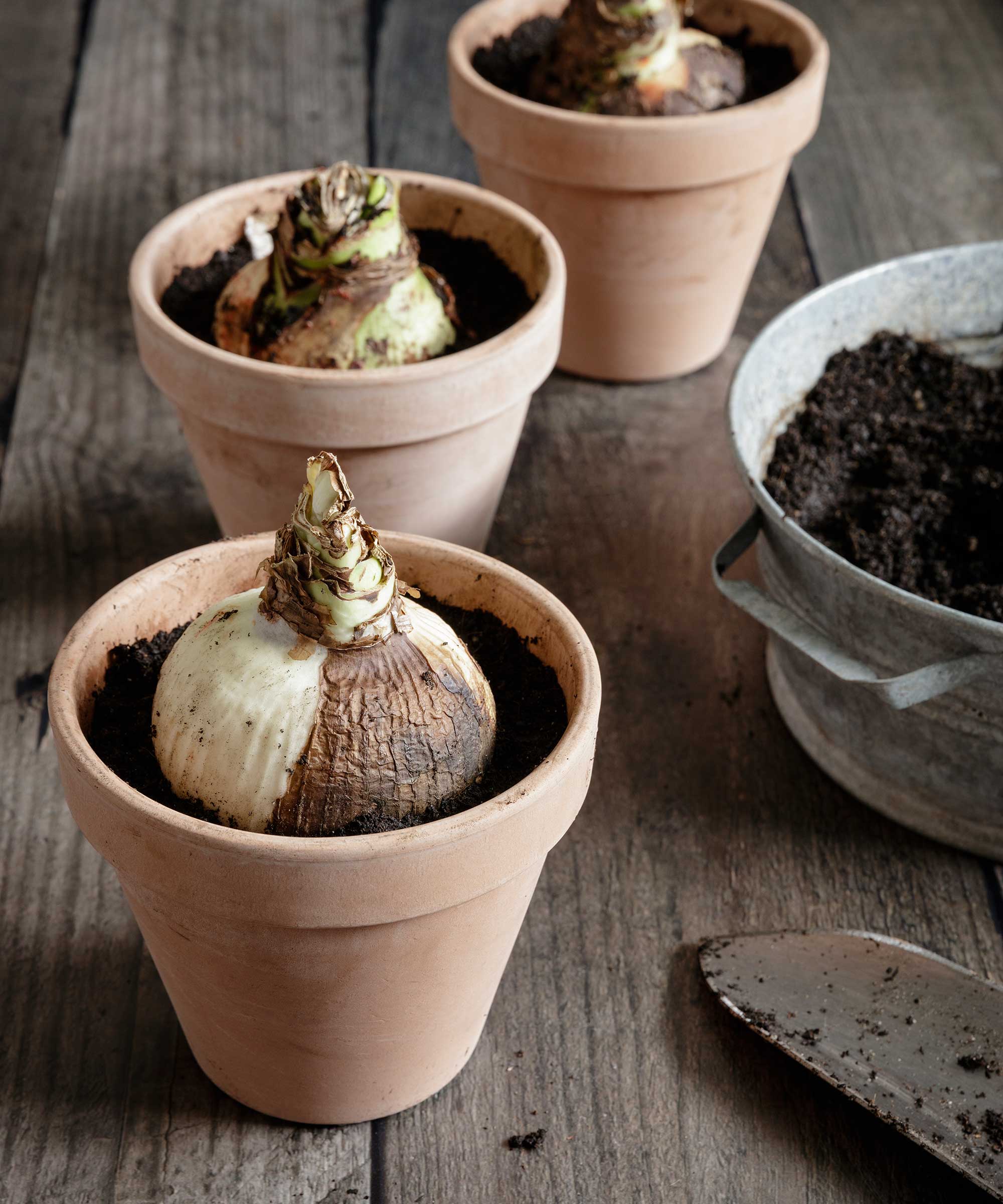
While amaryllis can often be bought pre-potted from nurseries, you can also plant the bulbs yourself in the fall. If you get the timing right, usually by planting in September, you can enjoy the blooms over the festive holidays.
You can shop for amaryllis bulbs from Amazon depending on the season. However, It's important to inspect bulbs before planting them, to save disappointment.
Anna Ohler, owner of Bright Lane Gardens nursery, says, "Choose healthy bulbs that are firm and free from any signs of rot or damage (such as squishy spots, areas of mold or powdery mildew, or signs of moisture). Larger bulbs tend to produce more flowers."
2. Use well-draining soil
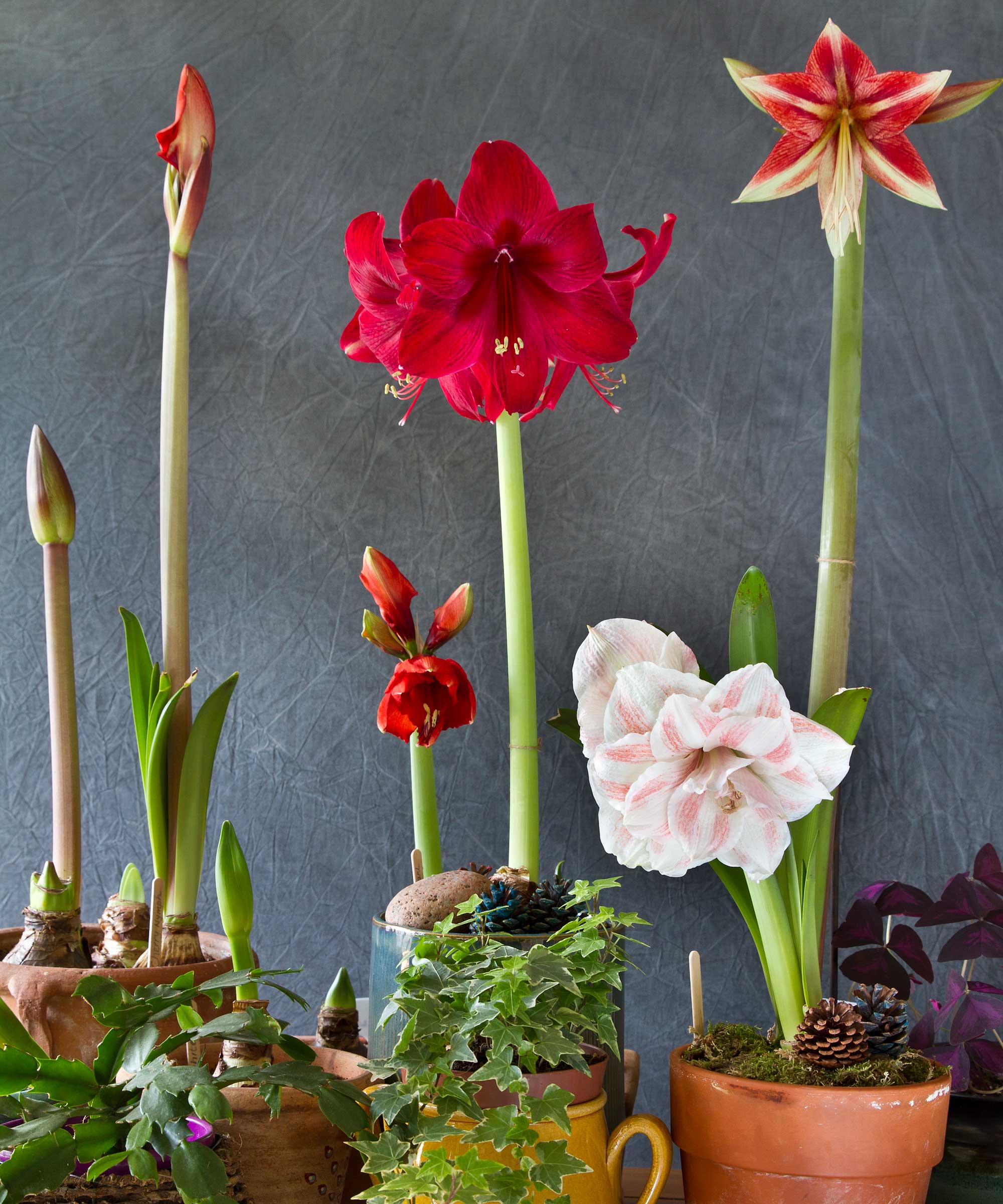
Amaryllis bulbs should be planted in a well-draining soil mix, similar to when caring for most houseplants.
Autumn Hilliard-Knapp, a plant expert from Perfect Plants Nursery, recommends a mix specifically formulated for houseplants, or a combination of potting soil, compost, and sand. "This allows excess moisture to drain away from the roots."
She suggests the indoor plant soil mix from Perfect Plants Nursery.
When planting your bulb, Amy Enfield, senior horticulturist at ScottsMiracle-Gro, recommends picking a container with drainage that is about one inch wider and twice as tall as your bulb. Fill the pot about halfway, she instructs, then place your bulb on top of the soil with the pointed end up.
"Fill in around your bulb with more potting mix, leaving the top third of the bulb exposed," she says.
Then, water the potting mix, avoiding wetting the top of the bulb. "You should see blooms in about 8–10 weeks," Amy adds.
3. Water carefully
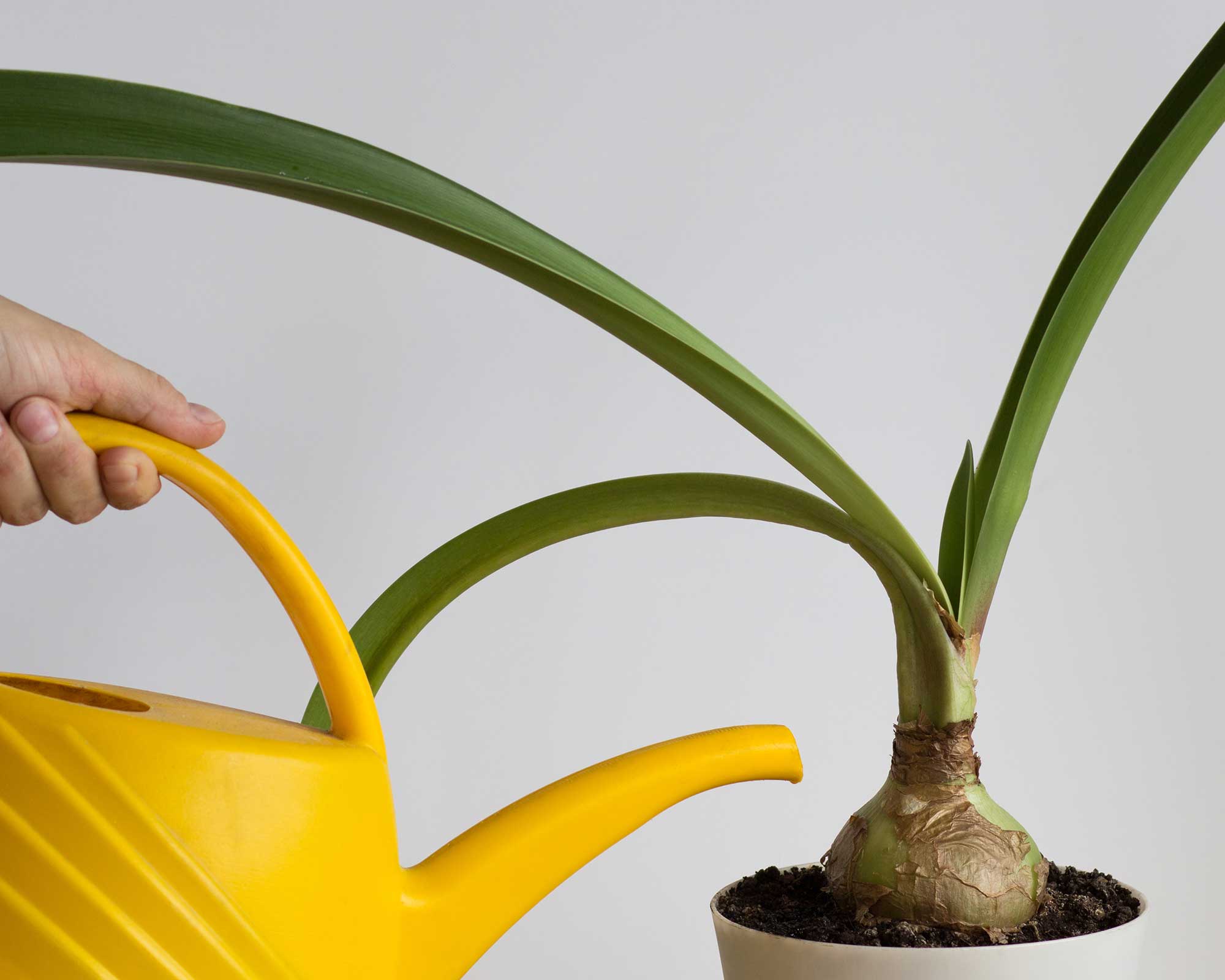
Proper watering is crucial when learning how not to kill your houseplants.
Autumn says, "Amaryllis plants prefer to be kept slightly on the drier side, so it's important to avoid overwatering. Allow the soil to dry out partially between waterings, and be mindful not to let the plant sit in standing water. Overwatering is the most common issue with amaryllis plants, leading to root rot."
Diane Kuthy, a gardening expert from How To Grow Everything, recommends using the finger test to gauge when to water your amaryllis. "Dip your finger about one inch into the soil. If it feels dry, then water, if it is still moist, hold off," she says.
Alternatively, you could invest in a smart moisture meter, available from The Sill.
"Water just the soil and avoid getting the bulb wet," Diane continues. "It is best to use room temperature water."
You can also bottom-water your amaryllis, as Nastya Vasylchyshyna, a resident botany expert at Plantum, advises. Simply place its pot into a water-filled tray for about half an hour, she says, then remove any excess water from the pot saucer afterward.
4. Provide bright light
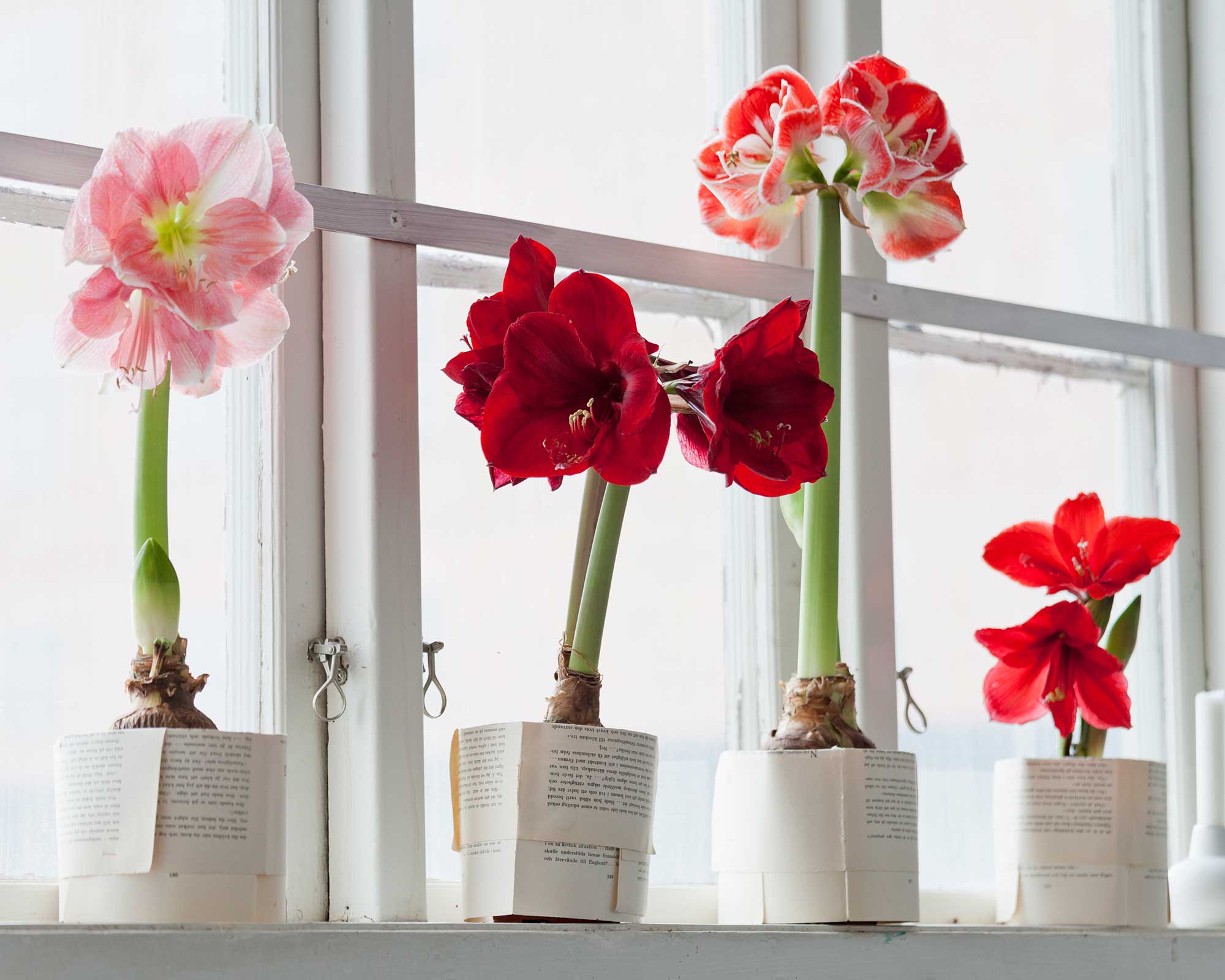
Just like learning how to care for fiddle leaf figs, it's vital to know that amaryllis need plenty of bright light.
Autumn says, "Place them near a sunny window or in a well-lit area, but avoid exposing them to direct sunlight, which can scorch their leaves." She recommends rotating the pot every few days, too, to encourage the plant to grow vertically and prevent it from curving or leaning.
Remember to keep your amaryllis away from four-legged friends — these are not pet-friendly houseplants.
5. Get the temperature right
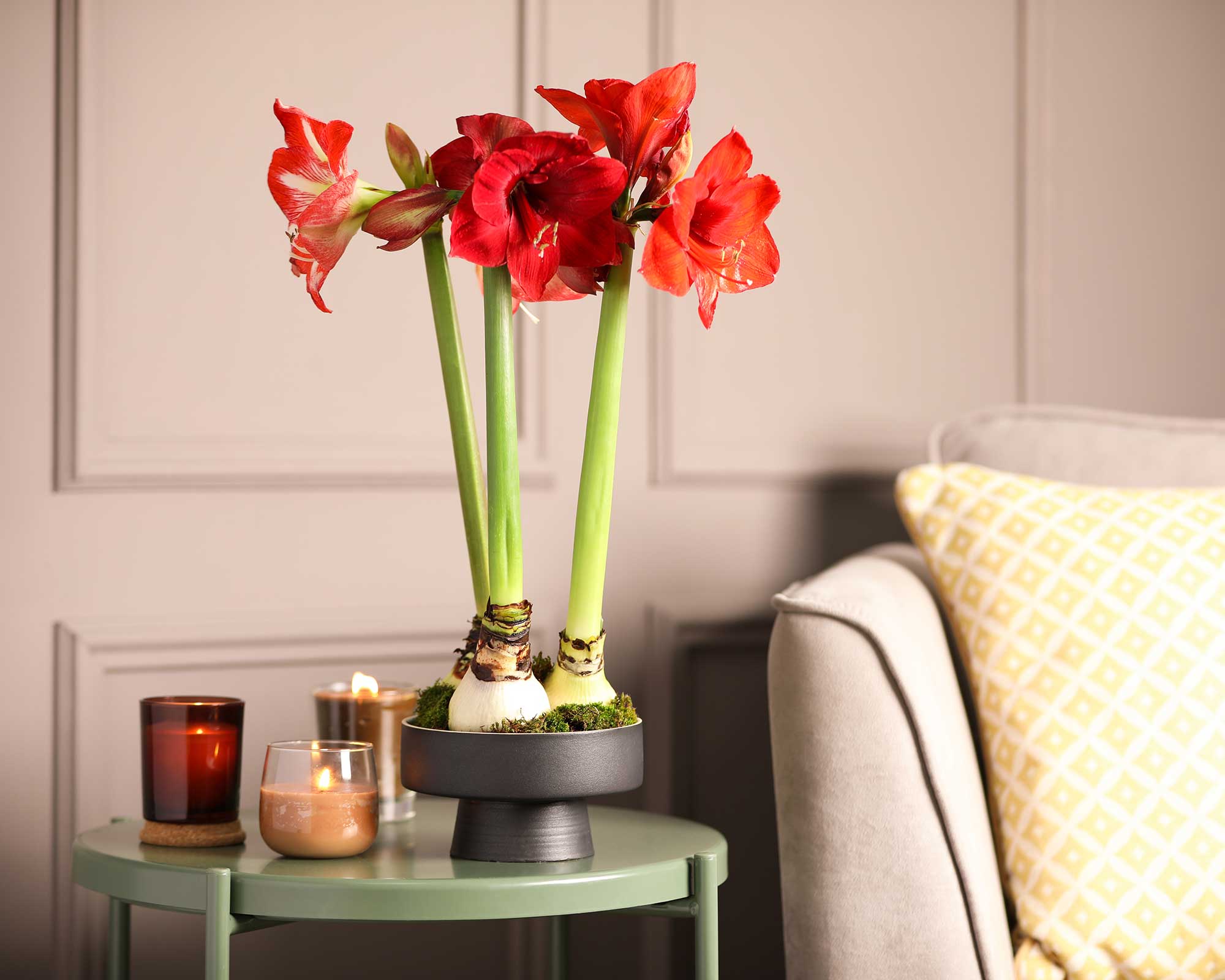
Nastya says, "The optimal temperature range during the active growing period is 66–73° Fahrenheit."
As with most indoor plants, jade plants included, keep it away from air conditioning units and drafts.
Consider using this clever Bluetooth thermometer, available from Amazon, to help maintain a suitable environment.
6. Fertilize during active growth
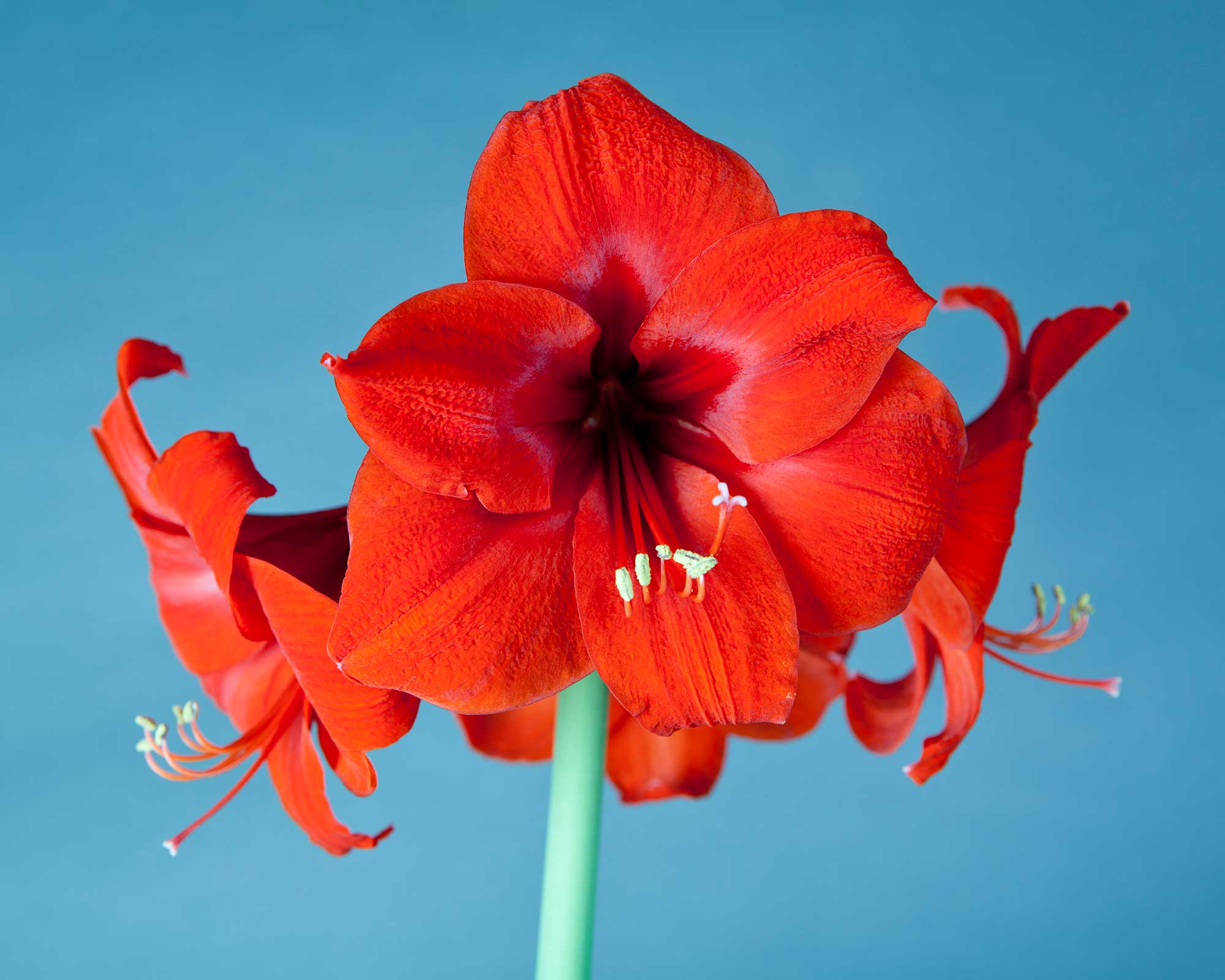
Fertilizing is a factor to consider when learning how to care for amaryllis plants.
"Amaryllis flower best when they are placed in a small container that is only a tiny bit larger than the bulb itself," says Diane. "This causes the plant to become pot bound. Because there isn't much soil in the pot, it will need extra nutrients often to keep the bulb well fed and growing."
Autumn advises, "Feed your amaryllis plant with a balanced, water-soluble fertilizer every two to four weeks during the active growing period. Fertilizing a bare bulb can be fatal to the plant, so remember to wait until after the plant grows."
The Perfect Plants Nursery liquid indoor plant food is Autumn's recommended choice. This can be used when caring for calla lilies, too.
7. Stake your plants

"As the flower stalk grows, it may need support to prevent it from bending or breaking," says Anna. "Gentle staking with bamboo stakes or a small trellis is helpful."
Alternatively, you could opt for plant stakes from Amazon, which are also suitable for orchids.
8. Prune spent flowers
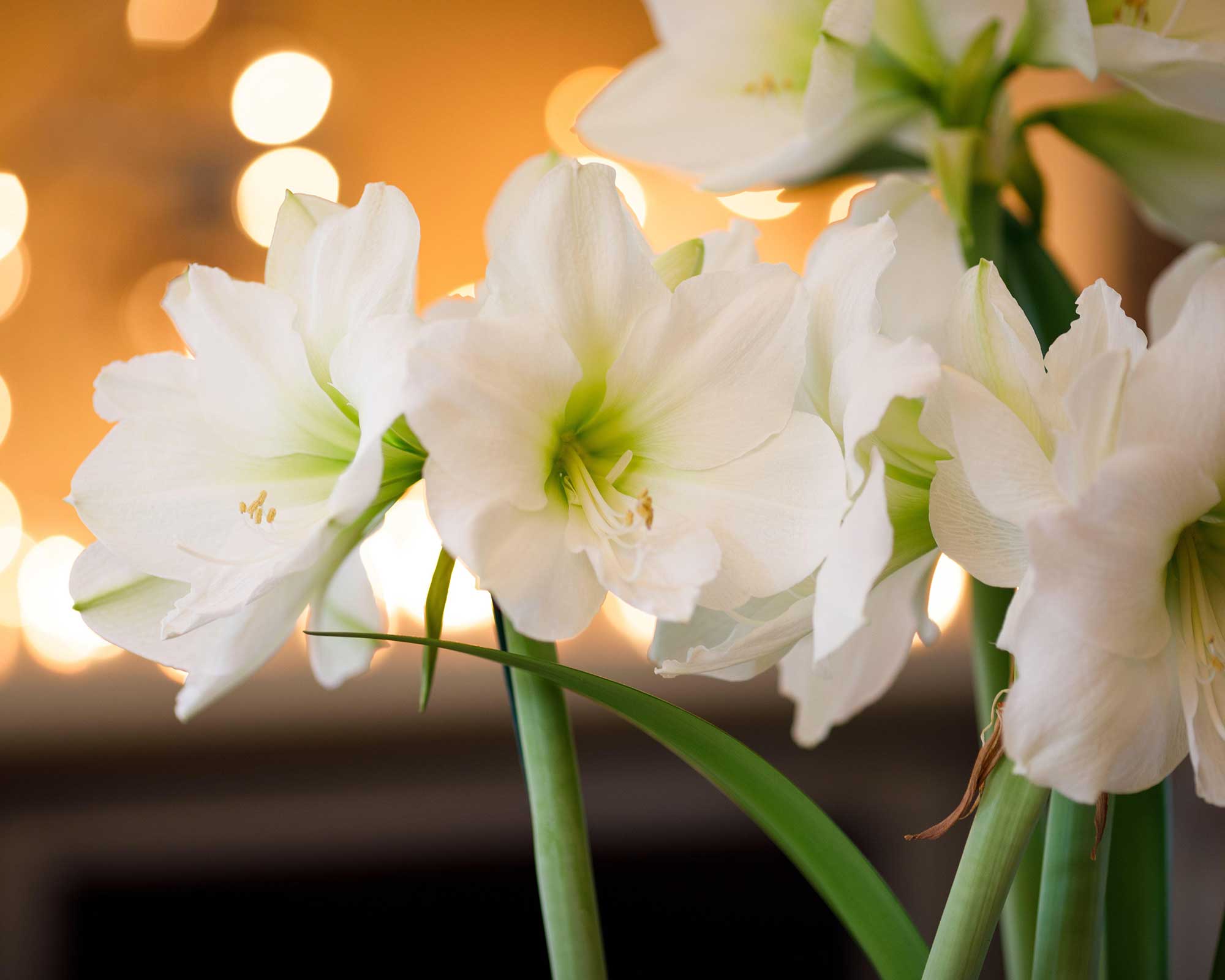
Nastya says, "Once the plant finishes blooming, you’ll need to prune its spent flowering stem."
Dry and yellowing leaves can also be removed at the base as they appear.
You'll need a good tool for the job, such as these Fiskars pruners from Amazon with over 33,000 five-star ratings. They will be useful for pruning dead leaves when caring for your peace lily, too, if you have one.
9. Watch out for pests
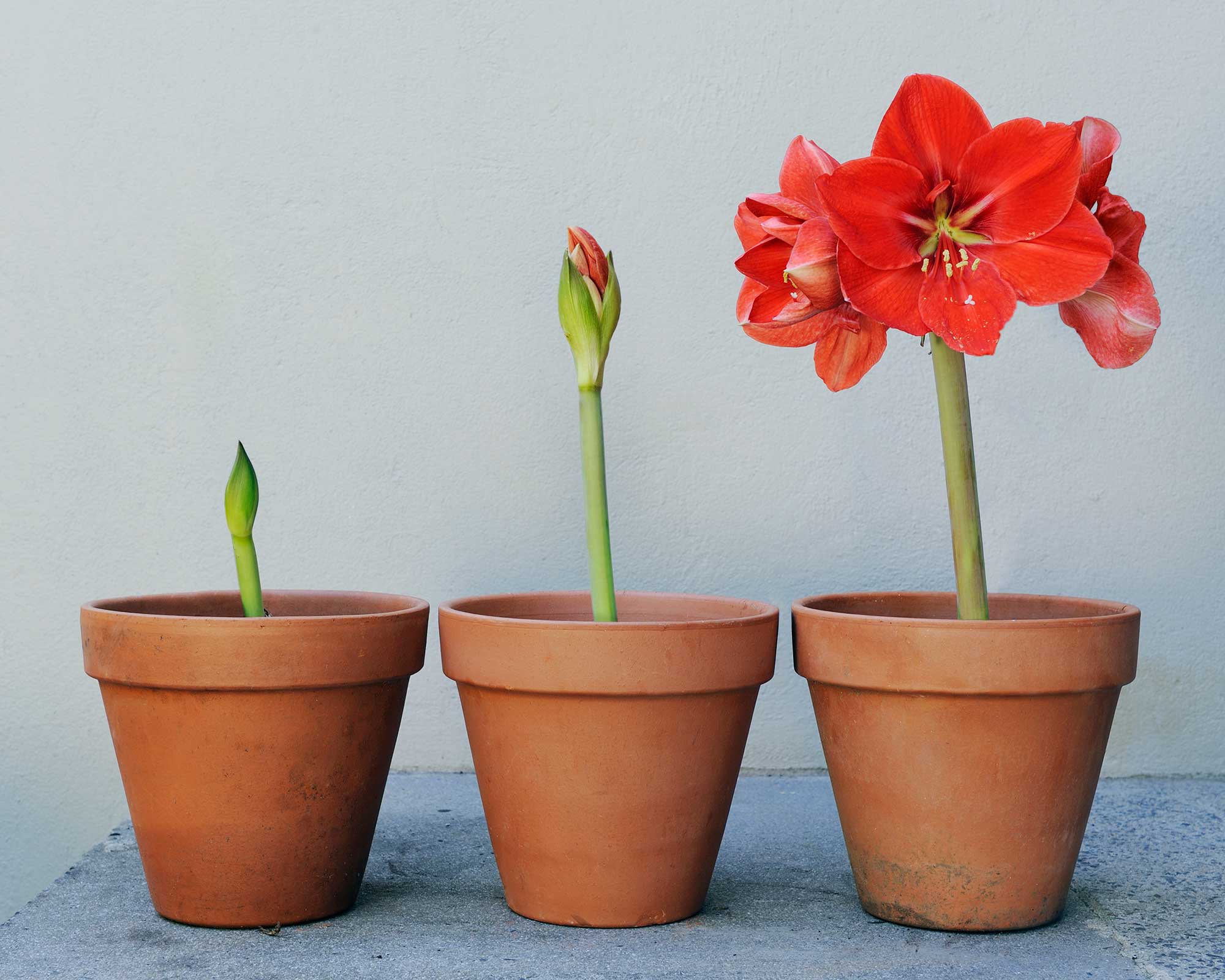
It's worth knowing how to identify houseplant pests when caring for amaryllis.
Nastya says, "Indoor amaryllis are susceptible to infestation by mealybugs, scale insects, and spider mites." Should you spot any, she suggests treating the plant with an insecticidal soap.
The Garden Safe insecticidal soap spray from Amazon is a well-favored solution for tackling a wide range of unwanted bugs.
Gnats can be common in houseplants, especially when the soil is overwatered. We recommend cheap and cheerful sticky yellow traps available on Amazon. Our experts have covered how to get rid of gnats in houseplants.
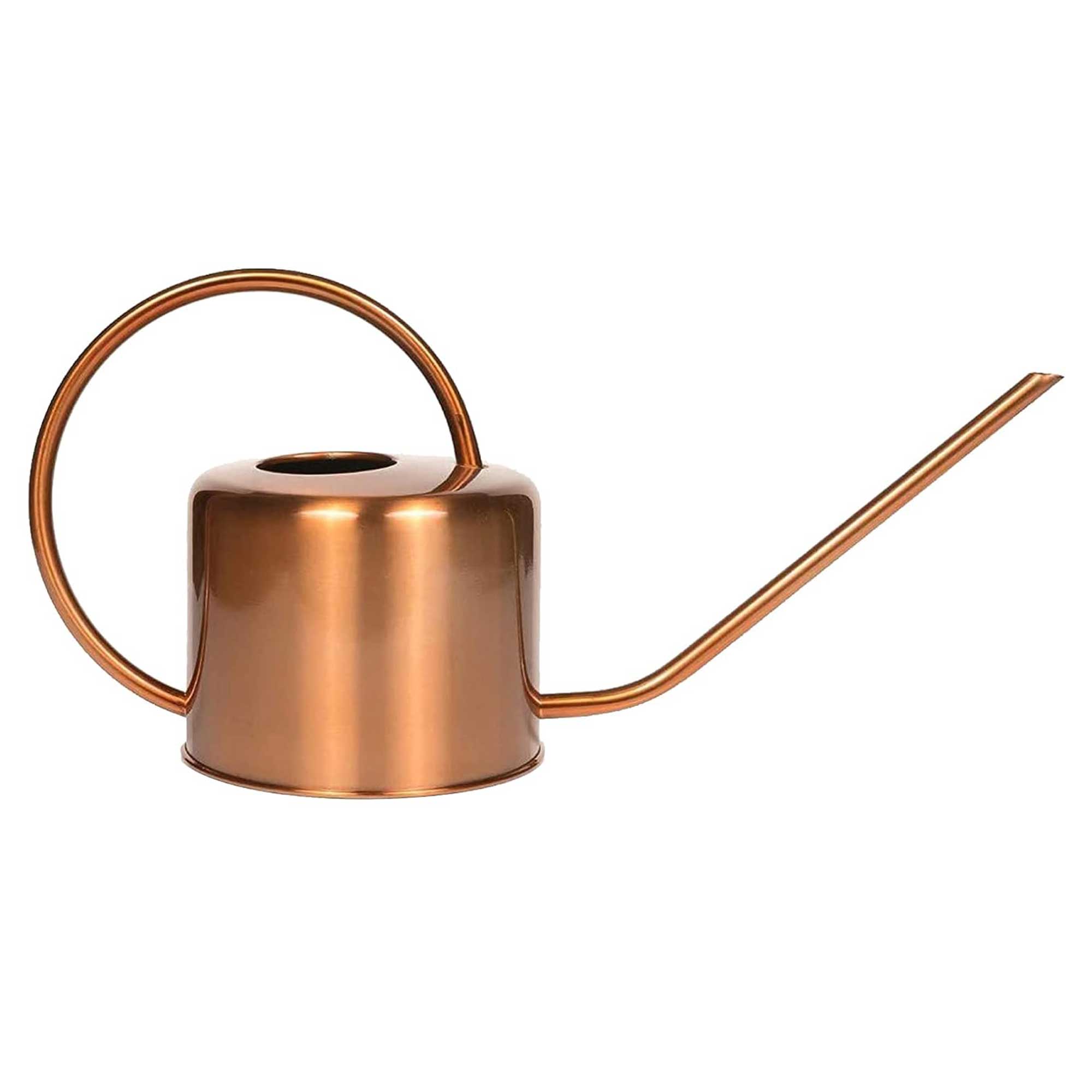
Price: $29.99
From Homarden comes this functional and super stylish metal watering can that's perfect for precisely watering amaryllis and other houseplants.
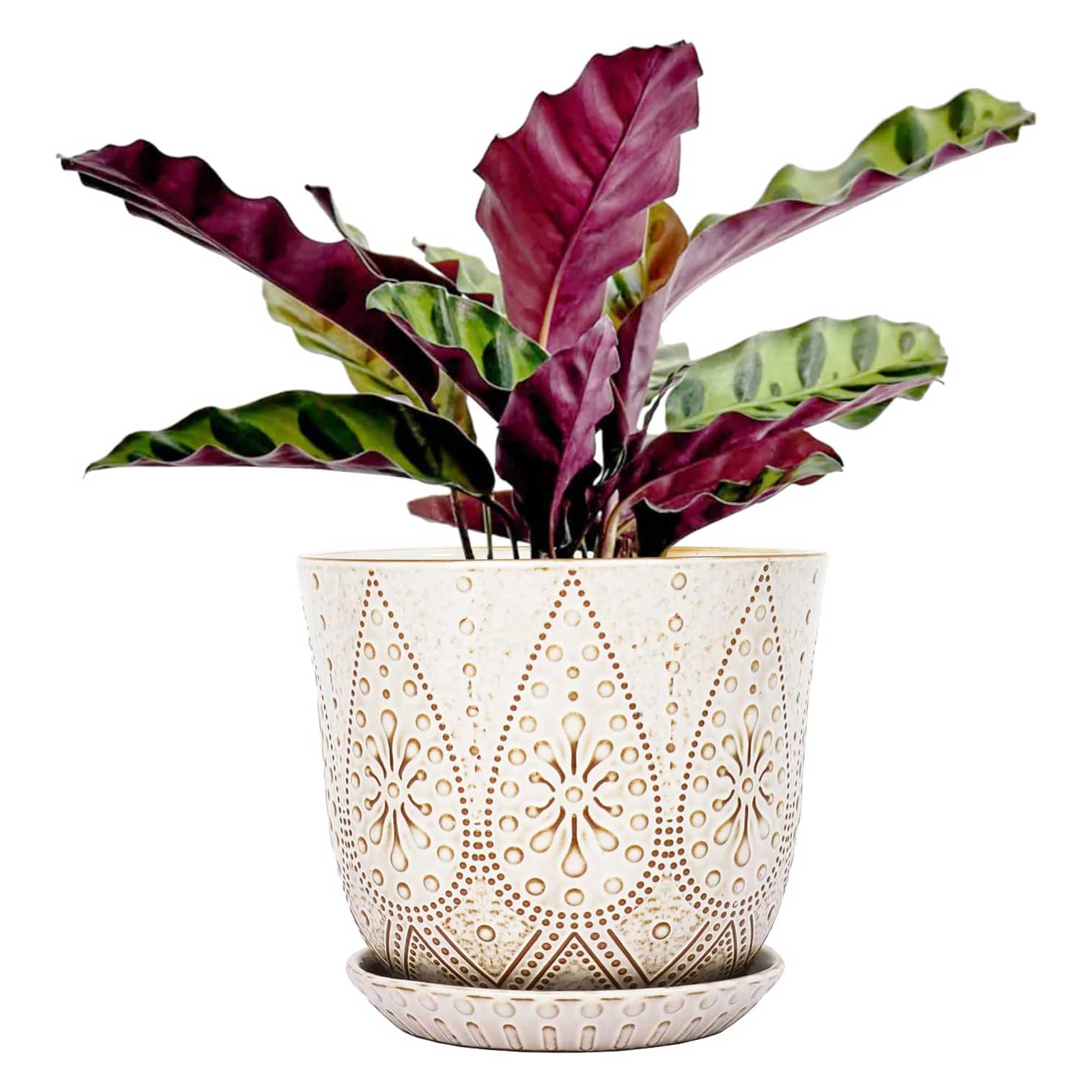
Price: $39.99
We love the boho-chic vibe of this ceramic plant pot from Gepege. Plus, it comes with a drainage hole and saucer to make watering easy.
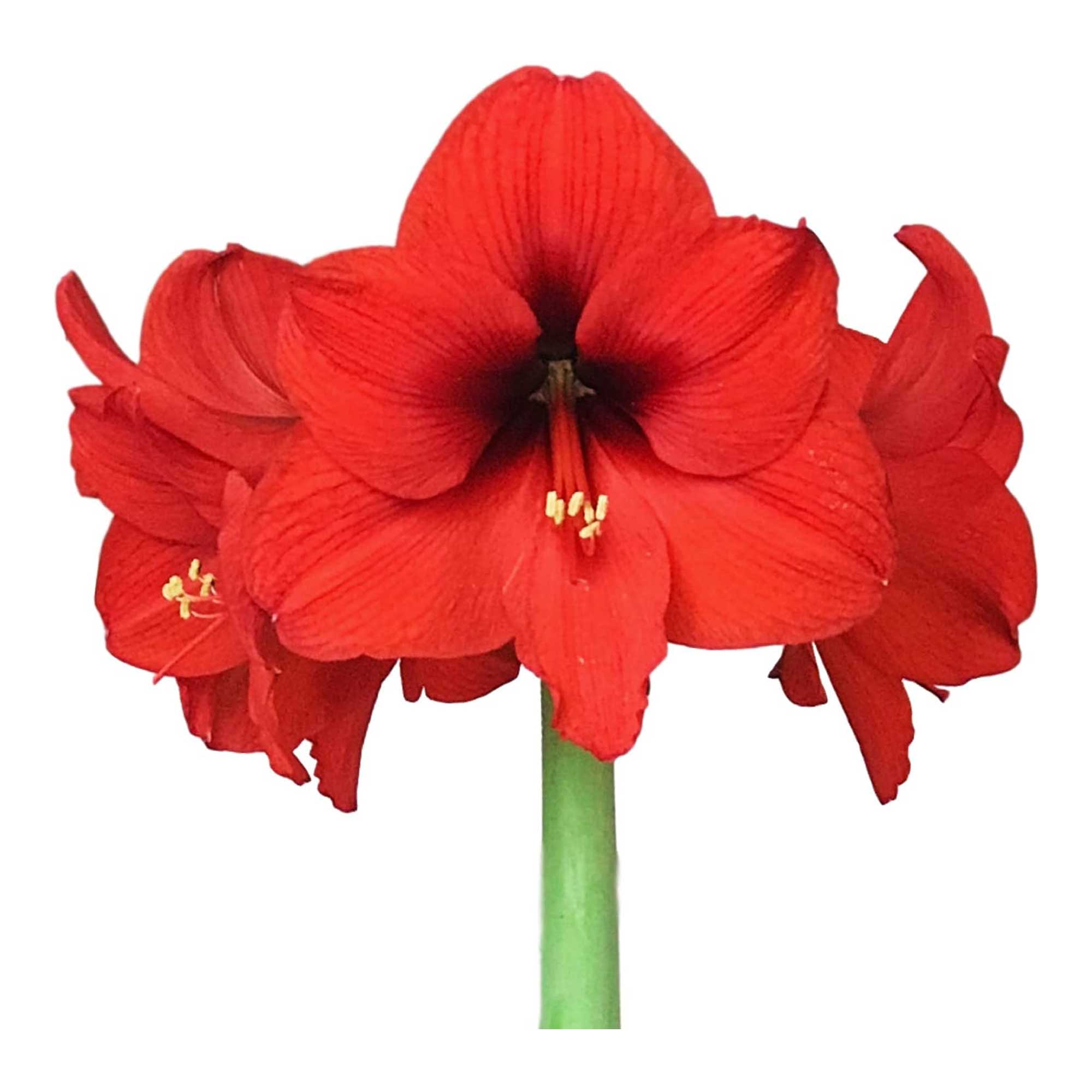
Price: $10.95
Plant this large bulb from Easy to Grow to enjoy a striking red variety of amaryllis that'll brighten your home. There's also a 5-pack option available.
FAQs
Can you move amaryllis plants outdoors?
If you have a yard or even a small balcony, you can move your amaryllis outdoors in the spring and summer months.
Autumn says, "Amaryllis plants can be moved outdoors once they are done blooming and once all risk of frost has passed, usually in mid-April. Gradually acclimate them to outdoor conditions by placing them in a shaded area for a few hours per day."
Nastya adds, "Don’t place the plant where it’ll be exposed to direct afternoon sunlight — make sure it receives bright light only in the morning and evening hours."
Moving it outdoors will allow it to take advantage of the sunshine and help replenish the bulb to bloom again next winter, says Amy. Continue to water and fertilize it, to promote leaf growth and development, she adds.
"Amaryllis should be brought back indoors before the first fall frost and before night temperatures drop to 50° Fahrenheit," she says.
Do amaryllis need a dormant period to flower again?
According to Amy, amaryllis do not require a rest period in order to rebloom. "If allowed to continue growing, they will eventually reflower," she says.
However, if you want to control when these blooms appear, you can induce dormancy in late summer or early fall. Start this 12–18 weeks before you want your amaryllis to flower, Amy says.
To do this, place your amaryllis in a cool (50–60° Fahrenheit), dry, dark location (like a closet), she continues. Leave them here for 8–12 weeks without watering them. Let the leaves naturally turn brown and dry, and trim them off once they have.
Amy says to place the plant in a sunny spot after 8–12 weeks. You can also move it here earlier if you've noticed new growth forming before the 8–12 weeks are up.
Then, water the potting mix and continue to water and feed it as it grows. "Flower stalks will usually start to emerge in about 4–6 weeks," she says.
Can you propagate amaryllis?
You can propagate fiddle leaf figs, spider plants, and many other indoor plants to expand your collection. And amaryllis are no exception — if you know the correct way to go about it.
Autumn says, "Amaryllis plants are commonly propagated through bulb offsets that emerge from the main bulb. To propagate, gently separate the smaller bulbs from the larger bulb, ensuring each has some of its own roots intact.
"Plant these offsets in separate pots using well-draining soil, and care for them as you would mature amaryllis plants," she says.
Amy says, "In about 3–4 years, they should reach the same size as the mother bulb." The best time to propagate amaryllis this way is in late winter or early spring, she adds – once the main bulb is done flowering.
It's also possible to propagate amaryllis from seed, although it is quite an involved method, points out Nastya. "The seeds have to be sown soon after collection and kept under strict growing conditions to germinate, but even then it takes 5–6 years on average for the first blooms to appear."
Now you know how to care for amaryllis, perhaps you'll be tempted to plant one of these brilliant bulbs in the fall. That is, if you haven't got one growing already.
And, if you're looking for more leafy pals to brighten your home, why not consider caring for a lucky bamboo plant? It's a super easy houseplant that can be grown without soil.



!["[T]he First and Fifth Amendments Require ICE to Provide Information About the Whereabouts of a Detained Person"](https://images.inkl.com/s3/publisher/cover/212/reason-cover.png?w=600)



